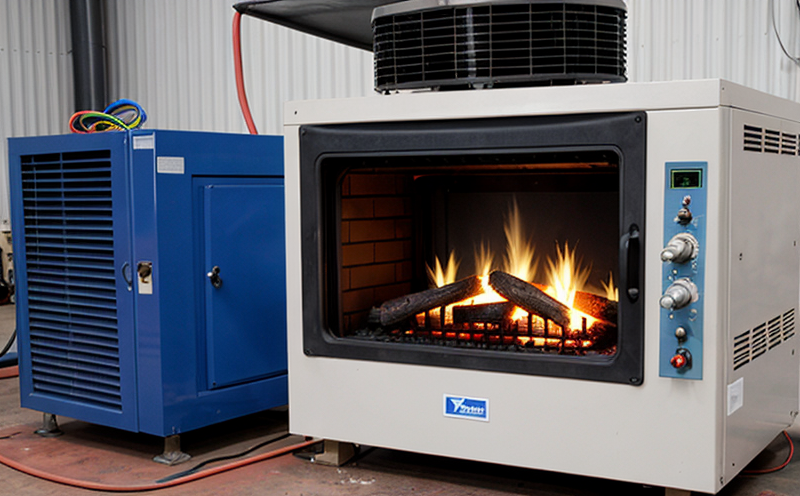EN 62471 Thermal Safety Testing for Photobiological Risk
The European Standard EN 62471-1:2018 sets forth essential criteria to ensure the photobiological safety of luminaires and similar products. This standard is crucial in mitigating risks associated with exposure to light from artificial sources, particularly the potential for thermal injuries caused by laser-like emissions or intense visible light.
The standard specifically addresses the photobiological risk classification based on radiant power and spectral distribution across various wavelengths. It provides a harmonized framework that aligns with international standards such as ISO 21835:2016, ensuring that manufacturers can comply globally while adhering to local regulations.
Thermal safety testing under EN 62471 is essential for several reasons:
- To prevent burns and other thermal injuries caused by prolonged or excessive exposure to light sources.
- To ensure compliance with regulatory requirements in the European Union and beyond.
- To safeguard consumer health and safety, especially for products used in close proximity or for extended periods.
The testing process involves a series of controlled experiments designed to simulate real-world conditions where users might be exposed to light from the product. This includes measuring the radiant power at different wavelengths and ensuring that it falls within acceptable limits as defined by the standard.
Our laboratory adheres strictly to EN 62471 methodologies, employing state-of-the-art equipment to ensure accurate and reliable results. Our team of experts ensures that every step of the testing process is conducted with precision, from initial consultation through final reporting.
| Parameter | Description |
|---|---|
| Radiant Power Measurement | Measurement of light output at various wavelengths to classify photobiological risk levels. |
| Spectral Distribution Analysis | Evaluation of the spectral distribution of emitted light to determine potential risks. |
| Thermal Imaging | Capture and analysis of thermal signatures using high-precision cameras to detect any anomalies. |
| Exposure Time Simulation | Simulation of prolonged exposure scenarios relevant to the product's typical use. |
The testing process is critical for ensuring that products meet stringent safety requirements, thereby protecting users from potential harm. Our comprehensive approach ensures not only compliance but also the highest level of product safety and reliability.
Why It Matters
The importance of EN 62471 Thermal Safety Testing for Photobiological Risk cannot be overstated, particularly in sectors where light sources are integral to daily operations. For quality managers and compliance officers, ensuring that products meet these standards is essential to avoid costly recalls and legal issues.
- Health and Safety: Preventing thermal injuries from light exposure is paramount, especially for products used by vulnerable populations or in environments where prolonged exposure may occur.
- Regulatory Compliance: Adhering to EN 62471 ensures that products meet EU regulations and can be marketed freely within the single market.
- Brand Reputation: Demonstrating a commitment to product safety enhances brand reputation and consumer trust.
R&D engineers benefit from this testing by gaining insights into potential risks and opportunities for improvement, enabling them to innovate while maintaining high standards of safety. Procurement teams can also leverage these tests to ensure that suppliers meet stringent quality and compliance requirements.
Scope and Methodology
The scope of EN 62471 Thermal Safety Testing for Photobiological Risk is broad, encompassing luminaires and similar products. This includes but is not limited to:
- Luminaires used in public spaces.
- LEDs intended for general lighting applications.
- Bulbs and lamps designed for domestic use.
The methodology involves a series of steps to ensure that the photobiological risk classification is accurate. This includes:
- Initial Assessment: Conducting an initial assessment of the product's design and intended use to determine potential risks.
- Spectral Analysis: Performing detailed spectral analysis to classify the product based on its photobiological risk level.
- Exposure Testing: Simulating real-world exposure conditions using thermal imaging and other advanced techniques.
The testing process is meticulous, with each step designed to ensure that products are safe for use. Our laboratory adheres strictly to the standard's requirements, ensuring that every test is conducted with precision and accuracy.
Benefits
- Enhanced Safety: Ensures that consumers are protected from potential thermal injuries caused by light exposure.
- Compliance Assurance: Ensures compliance with EU regulations, facilitating smooth market entry and expansion.
- Risk Mitigation: Identifies and mitigates potential risks early in the product development cycle.
- Innovation Support: Provides insights into potential risks, enabling R&D teams to innovate safely.
The benefits extend beyond compliance and safety, offering valuable data that can drive product improvements. By identifying areas for enhancement, manufacturers can refine their products, enhancing both performance and user experience.





